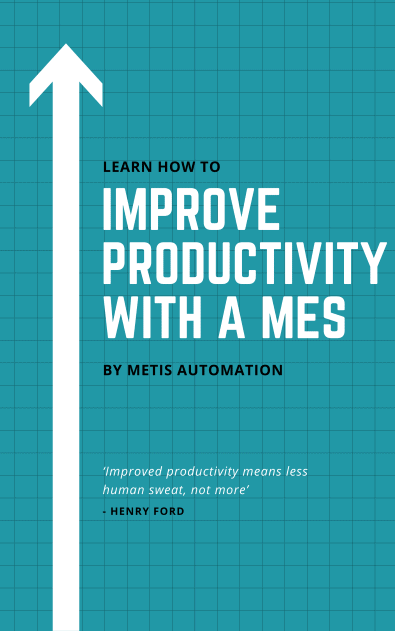How would you get started with implementing a Manufacturing Execution System? There’s quite a lot already happening in manufacturing, and the process itself is complicated enough as it is. But what really affects the bottom line, is how you manage these processes. A MES is the best option for effectively managing your operations with automated data collection, organised digital filing, and accessibility.
It’s only normal to have reservations before implementing a new structure into your business. However, it’s also important to remember the positive extent to which your company will flourish once you have a clear, efficient system. If you can monitor, track, and improve your operations, software solutions are your best bet to regain total control.
Here are five steps to get you started on successfully implementing a manufacturing execution system into your company and make a positive impact on your business.
Step 1 – Apply a Strategy
This is about understanding what impact or what difference you want it to make to your business.
For example, a company decides they need a MES. They’re at a stage in their growth to potentially expand their manufacturing process. However, they realise if they expand with their existing systems, with people writing on paperwork and scanning in documents etc, that the amount of admin would get completely out of hand. It wouldn’t be sustainable. Putting in an automated, systematic process, could be a key strategy driver for your whole decision making and implementation process.
Other strategies we see, are customers driving people to have a solid quality control and product traceability process. This could be to do with becoming more competitive, adding advantages, cutting lead time, or being more responsive. It could also be about capturing real data to drive continuous and productivity improvements.
What MES system you use, what you do with it and how you track it, will depend on which path you go down. Deciding at management level what the strategy is for the business over the next five to 10 years, will help identify how a mes will help that strategy.
Step 2 – Set Goals
Once you have set your strategy, you need to set some specific goals. These will give you a clear benefit when they’re implemented in your business.
These will probably be driven by the KPIs you’re already using in your business. This may be a productivity-based one like OEE, or a customer one, for example, on-time delivery or lead time.
Setting goals based on your KPIs will also give you a clear cost justification. If you can say that your productivity will increase by 10%, you can calculate the benefit to the business and help justify the time and money expenditure. Additionally, any cost of improvements can be tied into the benefit that it will give in sales, versus the investment you need to make into the system.
Step 3 – Map Out Your Existing Manufacturing Process
Look for opportunities where the mes can slot in to your existing manufacturing process and make a big impact.
What you’re looking for initially is the 20% of activities that cause the most mistakes. What takes the longest amount of time and are there any data entry issues? This can include things such as operators writing up measurements or maintenance checks on pieces of paper and inputting information into Excel spreadsheets. Anything that involves lots of downstream manual work is prime for taking out and being replaced by a MES.
Use the map as a basis to figure out how a mes can slot into your existing process alongside the strategy and goals you’ve set up. See how it can make the biggest impact in terms of guiding and training operators; capturing data; doing quality checks; building a traceable record or scheduleding planning or maintenance tasks.
Step 4 – Establish a Team
Identify a team and the key roles of the people who will be involved in successfully implement the MES.
You need to establish who’s going to lead the project and deliver on the ROI needed for the business. Someone who understands the overall goals and can stay focused on the business outcomes, without getting tied down in the tactical details.
You need people who will be involved in training and getting existing operators on board. It’s going to be quite a big culture change within the business, impacting people at every level and changing their day to day work practices. Therefore, having an effective trainer who understands culture change is important to the success of the project.
You do also need people who understand the technical details. People who can administrate the system, work with the supplier and get it installed and integrated into your business.
Step 5 – Capture the Process
Once you’ve decided how the MES is going to fit into your manufacturing process, you can capture the detail for each manufacturing operation.
You could put a video camera on someone as they go through their shift and how they build a product. Use this to understand the detailed steps. Ideally, what should end up in the MES, is a record and instructions for how to follow your manufacturing process. You need a clear, accurate understanding of the representation of your manufacturing process first, so people can follow it in the future.
Often what happens if you go off existing work instructions and standard operating procedures, is that when you go out into the factory and onto the production line, in reality, people aren’t following those processes to the letter at all.
So go out there, get videos, get photos and get it documented. As a starting point, capture what’s happening in reality and put that information into the mes. Capturing that process detail will ensure you have a stable and consistent process going forward. You can optimise it and improve it further, from there.
Summary
To summarise, the five steps to get started with a manufacturing execution system are:
- Apply a strategy
- Set some goals
- Map your existing manufacturing process
- Create a team with wide-set skills
- Capture the process detail with videos, pictures and written documents.
Once you’ve completed these tasks, you’ll be well prepared to decide what you need from a MES.

Download a Free guide showing you how to increase your productivity by 30%, reduce production lead times & provide a more responsive customer service.
Download Your Guide IMPROVE PRODUCTIVITY WITH A MES Now



